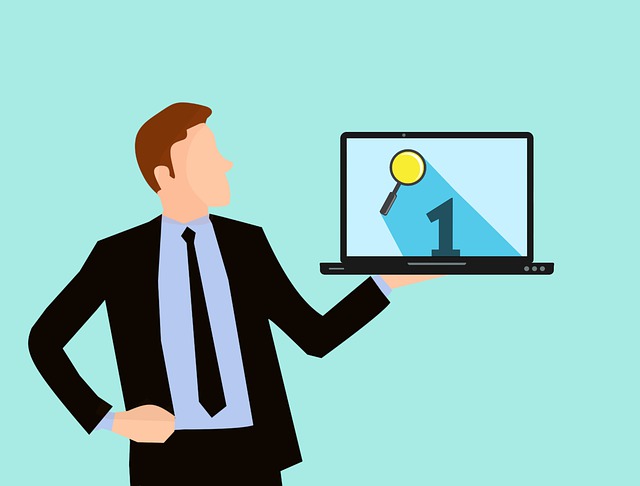
Marketo workflows are automated processes that execute tasks such as sending an email, following a person's activity on your site, or adding them to a list. Marketing automation allows marketers to streamline their daily tasks and free up time for other important tasks. By automating your marketing processes, you can convert more leads, shorten the sales cycle, and scale customer engagement.
Marketo workflows are created by setting triggers, which cause automated actions. A welcome email will be sent to someone who signs up for your Newsletter or fills out a form. The workflow sends the person a sequence of emails with information about topics relevant to them. This nurtures the lead to each stage of your funnel, increasing their likelihood to convert to a paying customer.
Workflows can be used as a trigger for reengagement campaigns, which help to maintain leads and increase their likelihood of conversion. A reengagement workflow can be set up when a certain period of time has passed from the last time a contact viewed your website, opened an email, or completed a form. The workflow will then send an email with a special promotion, company updates, survey, or cool content.

Marketo workflows also help improve the efficiency and effectiveness of your marketing department by giving real-time information about leads and prospects. This allows the sales team to focus on the most promising leads and can help them close more deals. Integrating Marketo with tools such as Salesforce and SalesLoft will also boost sales by providing the team with marketing materials and resources to help them better understand a product's value and communicate this to the customer.
With the addition of Adobe Sensei, Marketo has become even more capable with the capability to capture and analyze behavioral data. With its AI capabilities marketers can personalize the customer journey and deliver relevant information at scale.
Marketing automation can be very useful, but if it is not managed properly, it can quickly become overwhelming. Prior to implementing marketing automation, you should have a thorough understanding of its processes. This article is a step by step guide to help you get started using Marketo.
Set up your account first. Log in with your Marketo credentials to do so and create a secure password. Once you've completed this step, you are ready to start building your flow.

You will need to choose the option 'Build a Flow' in the left column of the screen. Select the 'Flow templates & Email' options. Depending on the automation that you want to create, you can choose between a number of different flow templates.
FAQ
Is marketing automation a skill?
Marketing automation is much more than just a tool. Marketing automation is a skill. It requires planning and precision as well understanding industry trends and analytics.
Knowing where and when to deploy campaigns can mean the difference between success and failure. It is important to tailor emails to each recipient's needs, interests, preferences and behaviors so that they resonate.
Marketing automation includes tracking performance metrics, analysing data points and targeting the right audience at exactly the right moment. When done properly, these are essential components.
Market automation should be treated like a skill. It requires focus, effort, and time to get it working the way you want.
How do I automate my posts?
Tired of posting manually on multiple channels? Automation is key to reducing your time and energy. Automated content can be posted to a number of social networks in one click. This allows you to stay connected and not have to.
Automating posts allows you to schedule posts ahead of time so that they are always available on time. You can control which networks your post will go out on and even automate it if necessary.
Automation also allows you to reach a wider audience in fewer clicks through automatically cross-posting content across multiple platforms. It's simple! Simply connect all of your social accounts such as Instagram, Twitter Facebook, LinkedIn and Facebook and begin scheduling posts. Take back control of your time, and you can get back to what matters most - creating great content!
What are the four main features of software for marketing automation?
Marketing automation software promises a simplified and improved digital marketing process, as well as meaningful insights that are based on your business goals. The best marketing automation tools can bring about tangible improvements in efficiency across multiple channels, and help maximize the effectiveness of your campaigns. Here are four important features.
-
Automated campaign: Automated tasks that trigger based users' behavior or other events can make managing complex campaigns much easier.
-
Analytics and Insights: Make use of advanced analytics to gain insights into customer behavior, optimize future campaigns, and maximize your chances of success.
-
Customer Segmentation. Use customer segmentation in order to ensure that every campaign is tailored and personal for the greatest success.
-
Messaging: Send automated messages that are tailored for each customer segment, improving both response rates and satisfaction levels.
The right marketing automation software can help businesses save time, money, and create personalized customer experiences. Automated tools enable you to segment customers based on their preferences and behavior, track customer engagement and send personalized messages to each segment. Marketing automation is a powerful tool that can help businesses compete in today's market.
What is SEO automation?
Automation in SEO can be defined as the use and automation of technology for marketing-related tasks. It helps save time, reduce costs and make the execution of campaigns more efficient. Automation can simplify SEO activities like content creation, keyword search, link building and SEO recommendations. Automated SEO services provide data-driven analytics to help identify high-value opportunities, which can be hard to find with traditional search engine optimization methods.
These days, there's almost nothing related to SEO that can't automatically be done--and that includes everything from monitoring website performance and competitor insights to optimizing your content for better search engine rankings.
Automation works in the background so teams can focus on strategic initiatives and not get bogged down in manual tasks. Automation is a great way to increase ROI and save valuable resources by delivering rapid improvements across multiple metrics.
Even better, it allows for you to constantly keep up with changes across search engines. This makes sure that your website is competitive in a changing digital landscape.
Automating can also make it easier to create and distribute content faster. Automated tools for SEO allow you to quickly create content that is keyword rich and meets the needs your target audience. You can also use automation to schedule and publish content on various channels, including social media, blogs, and websites. This helps ensure that your content reaches a wider audience and gets more visibility in search engine results pages (SERPs ).
Statistics
- Not only does this weed out guests who might not be 100% committed but it also gives you all the info you might need at a later date." (buzzsprout.com)
- Even if your database is currently filled with quality leads, how effective will your marketing automation be when you've either converted all those leads into customers or when your database begins decaying by ~22.5%/year? (hubspot.com)
- While they're doing that, their competition is figuring out how to get more out of the 99.99% of the market that's still out there. (hubspot.com)
- You can use our Constant Contact coupon code to get 20% off your monthly plan. (wpbeginner.com)
- Companies that implement this kind of lead scoring enjoy 28% better sales productivity and 33% higher revenue growth than companies without lead scoring (MarTech Alliance). (marketo.com)
External Links
How To
How can I use automation for personalizing my content marketing efforts
Automated personification is a process that uses data and technology to tailor content to different interests, personalities, and behaviors. This helps you create personalized marketing experiences based on how each individual interacts with your brand. Automation can increase the relevancy and effectiveness of your message via segmentation targeting, optimization strategies, and targeting.
By tailoring your content to the needs and preferences of specific audiences, it becomes more likely that they will engage with your brand. Automating your processes frees you up to concentrate on larger-picture tasks, such as creating high quality content or strategizing to reach more people.
Segmentation allows personalization to take off. This is done by breaking down your audience into smaller pieces so you can target them more precisely. Automating this process allows you to quickly create segments using language, interests and purchase history. You can then create messages that are tailored to each group, rather than just blasting the same message across all platforms.
Targeting works alongside segmentation. Once your audience has been divided, it is time to get messaging just right by landing targeted offers or ads at the ideal times. Targeting pages or channels in an email campaign could be done by placing banners at micro-targeted locations. Data intelligence can help you go beyond traditional methods like direct mail or cold calling to find potential leads.
Optimization is the final step. This allows marketers to make small adjustments to ongoing campaigns to achieve better results. Customers can also be personalized messages based on their actions. Businesses have powerful tools available to them that allow them to analyze past campaigns and make real-time adjustments to ensure their customers are getting customized messages when it's most convenient.
Automated personalization streamlines content marketing efforts. It allows brands to quickly segment audiences and optimize engagement with real-time data analytics adjustments.